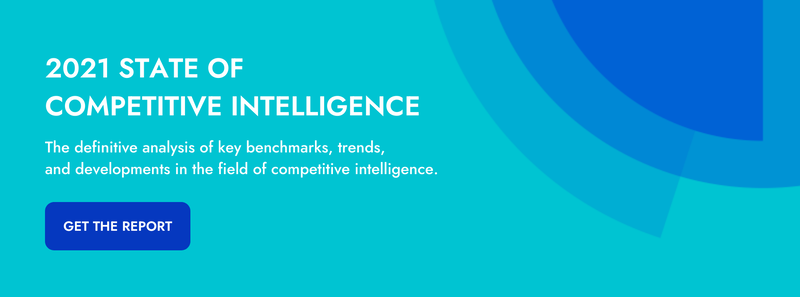Information comes at us fast and in a volume that makes it difficult to deliver insight and foresight. STEEP is the first step to exploring implications of events to get to the heart of "So what?" and future scenarios to get to the heart of "What's next?"
Strategic analysts use STEEP to understand the complex interplay of forces over which they have no control. There are six main benefits of conducting a STEEP analysis:
- Reduce the risk of missing important details
- Rethink issues based on a broad understanding of the big picture
- Identify the factors that explain events
- Get beyond normative analysis and assumptions
- Make sense of the overwhelming amount of information and data
- Identify trends, uncertainties, and inflection points that will define the future
STEEP is particularly valuable at times of volatility and uncertainty and that are defined by a high degree of complexity and ambiguity (your classic VUCA environment).
What is STEEP?
STEEP is an acronym and reflects the five meta-factors that define any macro-environment:
S = Society (e.g., Demographics, Family life, Public health, Religion, Social norms)
T = Technology (e.g., Information Technology, Biotechnology, Manufacturing, Materials science, New methods)
E = Economy (e.g., GDP, Interest rates, Inflation, Commerce, Labor, Income distribution, Equality)
E = Environment (e.g., Climate, Weather, Resource availability, Agricultural systems)
P = Politics (e.g., Elections, Regulation, International bodies, Conflict, Legislation, Legal systems)
STEEP is interchangeable with other outside-in analytical models such as PESTLE (prevalent in the UK and takes a more detailed view of Law) and STEMPLE (prevalent among national security and military intelligence professionals and evaluates Military factors detail). Analysts can adapt STEEP to add factors for more granular detail or demote factors that may not be relevant in a situation. For example, you may want to break out politics into national and state elements, if needed. You may define the "Environment" as the physical environment as I do or set it as the business environment. You can use both definitions in the same model-- STEEP is an infinitely flexible framework.
Using STEEP As a Foundational Analysis
Analysts must hold themselves to high standards: actively evaluate source reliability and information credibility and validate trends and uncertainties using multiple reliable sources. Always get as close to primary data as possible. Seek quantitative data from reputable sources to back up qualitative trends. For example, if you think public opinion or preferences around a topic are important, look for public sentiment or consumer surveys that quantify that trend. Don't rely on conventional wisdom, e.g., "Everybody knows Millennials love kale chips!" Avoid stereotypes of other races, generations, genders, or cultures.
STEEP is a foundational analytical tool and an important starting point for other analytical methods.
In What-If analysis, analysts examine the most critical uncertainties and ask, "What if?" Your goal is to enumerate possible outcomes. STEEP is your foundation for identifying those uncertainties.
In an Implications Wheel, analysts hone in on the most critical trends and uncertainties and ask themselves, "Then what happens?" You come up with a set of first-order implications for trends and uncertainties; What-If analysis is a useful first step if you're developing an implications wheel with uncertainties as well as trends. Then ask for the implications of your first-order implications to reveal second-order implications. Risks and opportunities reveal themselves beyond normative models of thinking about the future.
Scenario Analysis is the process through which analysts develop 3 or 4 possible futures based on identified trends and uncertainties. Analysts build stories about the possible futures and "reverse histories" that describe the milestones that happened along the way to those futures. Scenario analysis is a powerful strategic planning tool and improves intelligence tasking and early warning. STEEP is a must-have starting point for an effective scenario process.
How to Make STEEP Part of Your Day-to-Day
In my day-to-day work, I rely on STEEP as one element of what I call "the stack." The stack is three analytical tools I use to understand the complexity of the macro-environment and the critical players in it. STEEP enables me to understand the macro environment at a level far beyond the normative. Porter's Five Forces gives me a view of the industry in question, including who holds the upper hand in a market. SWOT analysis, done right, tells me the relative strengths and weaknesses and allows me to identify strategic courses of action for the crucial players in the market.
A good STEEP analyst will be well-read with diverse sources of information. For my purposes, The Economist is the best single publication for STEEP. It is structured to address each element of the STEEP framework. The magazine itself and every article in it is structured to allow you to get a quick gist of a situation and dive in deep if you so choose. I rely on Crayon for the breadth and depth of information about our competition while managing the firehose of information. I top this off with RSS feeds of my subscriptions to the Wall Street Journal, New York Times, Washington Post, local and industry trade publications, and other sources.
STEEP Analysis and COVID-19
I used STEEP to make sense of the situation at the outset of the COVID-19 pandemic and anticipate possible futures. As the magnitude of the health crisis became apparent, US states began lockdowns, and we could foresee the economic impacts of the situation. We identified uncertainties around which the health and financial future will pivot, and can build scenarios and focus our intelligence collection plans appropriately based on that understanding. You can see the STEEP analysis I prepared here. This document also contains a template you can use to develop your STEEP analysis as well as guidance on how to evaluate information and data sources.
STEEP gives me the systematic model to make sense of our complex world and get a handle on the future. This enables me and my stakeholders to develop plans to adapt and respond.
Watch a replay of August's session about STEEP from our Competitive Intelligence Bootcamp.

Related Blog Posts
Popular Posts
-
 The 8 Free Market Research Tools and Resources You Need to Know
The 8 Free Market Research Tools and Resources You Need to Know
-
 How to Create a Competitive Matrix (Step-by-Step Guide With Examples + Free Templates)
How to Create a Competitive Matrix (Step-by-Step Guide With Examples + Free Templates)
-
 6 Competitive Advantage Examples From the Real World
6 Competitive Advantage Examples From the Real World
-
 24 Questions to Consider for Your Next SWOT Analysis
24 Questions to Consider for Your Next SWOT Analysis
-
 How to Measure Product Launch Success: 12 KPIs You Should Be Tracking
How to Measure Product Launch Success: 12 KPIs You Should Be Tracking





